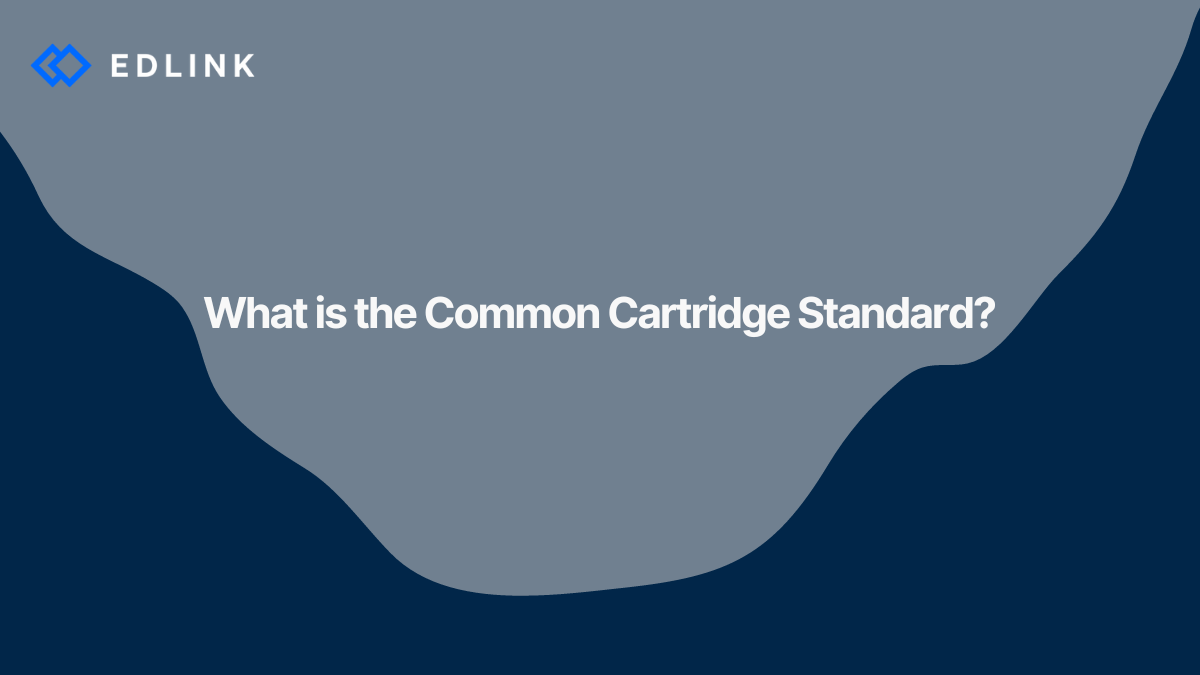The Common Cartridge Standard
Common Cartridge is a set of open standards developed by 1EdTech to enable interoperability between content and systems. The goal of Common Cartridge is to provide a format for packing and using educational content across different learning platforms. So in essence, the standard lets content be accessed in different systems.
This flexibility expands to support different content types and locations where content can live. And it reduces the cost and time needed to develop more content to integrate into different systems. This also makes more digital content readily available for schools to adopt – regardless of which learning platform the school uses.
Common Cartridge Version 1.3
The most recent version of Common Cartridge is CC v1.3, released July 2013. The standard is designed for a Common Cartridge compliant learning platform, such as an LMS, to properly import any file that is stored in a previous version (i.e. CC v1.0, CC v1.1, or CC v1.2). A Common Cartridge file contains features such as an IMS manifest file, roles metadata, LTI links, weblinks, embedded files, and question data.
Manifest File
The manifest file describes the content contained in the cartridge. For example, in a Common Cartridge compliant learning app, the manifest file informs which version is being used to package its content. The components that make up the manifest file may be in the package or external to the package.
Metadata
A Common Cartridge file contains data about the content, links, and roles within it. Metadata lets developers label and organize a cartridge’s content. The metadata can be in the IMS Learning Object Metadata (LOM) schema or any other metadata schema. Curriculum standards that are attributed to specific content or links packaged in the file can also be included in the LOM.
LTI and Web Links
A Common Cartridge file can contain LTI launch links and links to external web pages. The standard allows for data to be exchanged between externally linked applications and a LMS. LTI links can also be used as a method of authorizing users so that they can access remote content securely.
Content and Embedded Files
The package can contain several pieces of multimedia content. This can include web content in an HTML format and common file types, such as PDFs, EPub textbooks, videos, and text documents.
Assessment Content
A Common Cartridge package can contain tests, assessments, and question banks that are formatted using the IMS Question and Test Interoperability® (QTI®) and Accessible Portable Item Protocol® (APIP®) standard. The standard allows question types like:
- multiple choice (single and multiple response),
- true/false, essay,
- fill in the blank, and
- pattern matching.
Once the Common Cartridge package is uploaded into a Common Cartridge compliant learning system, the content contained within the file should be accessible according to how the file was packaged.
For example, questions contained within the Common Cartridge file should now appear as questions within the LMS’s interface. Similarly, applications that are launched, via an LTI link, contained within the package will appear within the learning system.
Thin Common Cartridge
Thin Common Cartridge is a profile within the Common Cartridge v1.2 and v1.3 specifications. A thin common cartridge restricts the types of objects that can be included. And it is limited to LTI links, web links, and metadata. The Thin Common Cartridge standard addresses consumers who need searchable content accessible within a learning object repository or LMS. As opposed to a thick common cartridge (where all of the content is bundled into a package) the Thin CC profile allows users to access a publisher's content. This content is contained externally and accessed via LTI, allowing for rapid deployment of a publisher's content within a learning platform. That’s because only LTI links are used to access external content need to be packaged, as opposed to packaging all pieces of content (as is done in a thick Common Cartridge file).
Read More on Data Standards
Here are other articles we’ve written on Data Standards to help you on your journey:
- Our collection of articles about Data Standards
- What is OneRoster?
- The Ed-Fi Alliance and the Ed-Fi Standard
- Access 4 Learning and the SIF Standard
- What are Caliper Analytics?
Learn More about Edlink
If you're looking for a partner who can help guide you through developing integrations using data standards (like these), then let’s introduce ourselves. We’re Edlink!

